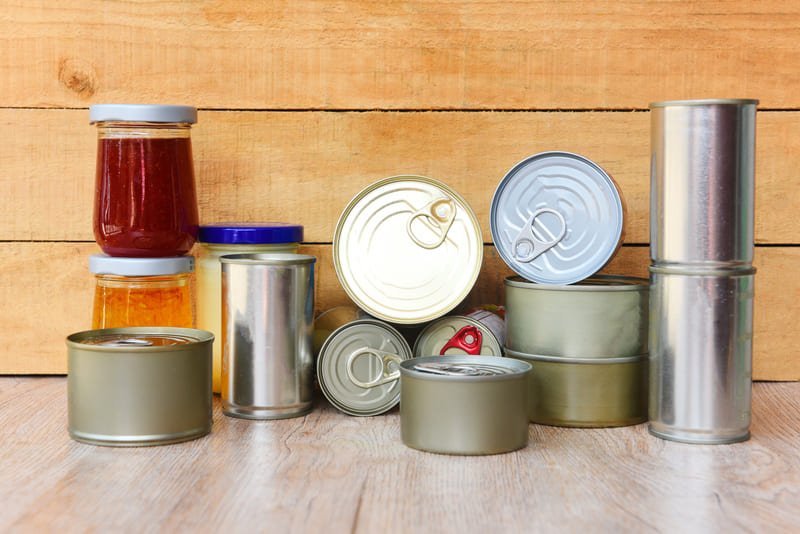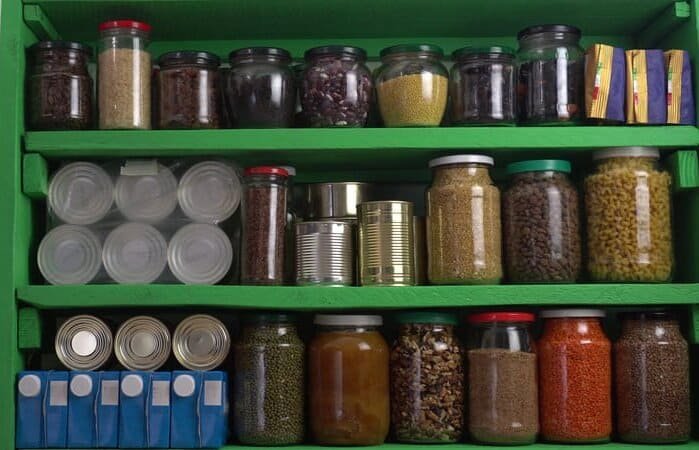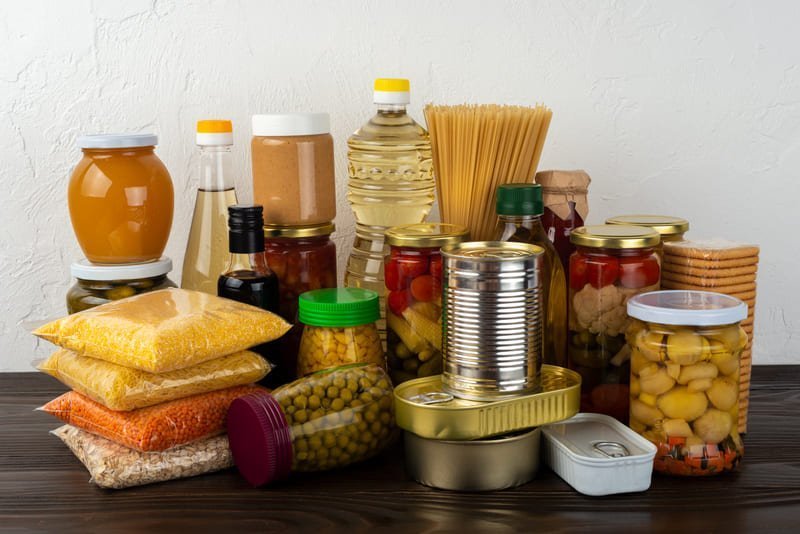When it comes to food, we often come across terms like perishable and non perishable food. But what do these terms actually mean? Understanding the difference between perishable and nonperishable foods is essential for proper food storage and reducing waste.
Perishable foods are those that spoil quickly, while nonperishable foods have longer shelf lives. Perishable foods include fresh food items such as meat, poultry, fish, eggs, dairy products, cooked leftovers, and cut fruits and vegetables. These foods have a shorter shelf life and need to be stored properly to prevent spoilage. On the other hand, nonperishable foods can last longer and can be stored at room temperature.
Proper storage of perishable foods is crucial to prevent bacterial growth and ensure food safety. Refrigeration at the right temperature helps slow down bacterial growth and extends the shelf life of perishable items. It’s important to refrigerate perishable foods promptly to maintain their freshness and quality.
Key Takeaways:
- Perishable foods spoil quickly and have a shorter shelf life.
- Nonperishable foods have longer shelf lives and can be stored at room temperature.
- Proper storage and refrigeration of perishable foods are important for food safety.
- Perishable foods include meat, poultry, fish, eggs, dairy products, cooked leftovers, and cut fruits and vegetables.
- Nonperishable foods include canned goods, rice, pasta, flour, sugar, spices, oils, jerky, and processed foods in sealed packaging.
What is Perishable Food?
Perishable foods are those that spoil quickly and can become unsafe to eat if not stored at the right temperature. This includes a variety of items such as raw meats, poultry, fish, eggs, dairy products, cooked leftovers, and cut fruits and vegetables. Most fresh fruits and vegetables are also considered perishable and require proper storage to extend their shelf life.
Refrigerating perishable foods is essential to slow down bacterial growth and preserve their freshness.
When perishable foods are not refrigerated, they become vulnerable to bacteria growth, which can lead to foodborne illnesses. The presence of moisture and warmth creates an ideal environment for bacteria to multiply rapidly, causing the food to spoil and become unsafe.
“Proper storage and refrigeration are key to maintaining the quality and safety of perishable foods.”
By refrigerating perishable food items, you can significantly slow down the growth of bacteria and prevent spoilage. The cool and controlled environment of the refrigerator inhibits bacterial growth, keeping the food fresh for a longer period. It also helps to maintain the texture, flavor, and nutritional value of fruits and vegetables.
Refrigerating Perishable Foods: Best Practices
Here are some guidelines to ensure proper refrigeration of perishable foods:
- Store raw meats, poultry, fish, and eggs in sealed containers or packaging to prevent cross-contamination.
- Place cooked leftovers in airtight containers and refrigerate them promptly.
- Keep dairy products, such as milk and cheese, in the coldest part of the refrigerator.
- Cut fruits and vegetables should be stored in sealed containers or wrapped to retain their moisture.
- Make sure the refrigerator temperature is set at or below 40°F (4°C) to maintain proper food safety.
“Properly refrigerated perishable foods can stay fresh and safe to consume for an extended period.”
By following these guidelines and refrigerating perishable foods promptly, you can minimize the risk of bacterial growth and maximize the shelf life of your food. Refrigeration is a simple yet effective method to ensure the safety and quality of perishable items.
| Perishable Foods | Storage Guidelines |
|---|---|
| Raw meats, poultry, fish, and eggs | Keep sealed and refrigerated at or below 40°F (4°C) |
| Dairy products | Store in the coldest part of the refrigerator |
| Cooked leftovers | Place in airtight containers and refrigerate promptly |
| Cut fruits and vegetables | Store in sealed containers or wrapped to retain moisture |
What is Nonperishable Food?

Nonperishable foods are an essential component of any well-stocked pantry. These foods have longer shelf lives and can be safely stored at room temperature without the risk of spoilage. Unlike perishable foods that require refrigeration to maintain their freshness, nonperishable items can be conveniently stored in a pantry or cupboard, making them a reliable option for long-term storage.
There is a wide range of nonperishable foods available that can easily fit into any meal plan. Canned goods are a popular choice and offer a great variety of options, including canned fruits, vegetables, soups, and meats. These items undergo a preservation process that grants them a longer shelf life while retaining their nutritional value.
Other nonperishable staples include rice, pasta, flour, and sugar. These pantry essentials are versatile and can form the base of countless delicious recipes. With their extended shelf lives, you can confidently stock up on these items, knowing they will remain fresh and usable for an extended period.
Spices, oils, and jerky are additional examples of nonperishable foods with long shelf lives. These items can add flavor and variety to your meals without the need for refrigeration. Processed foods in sealed packaging, such as granola bars and crackers, are also nonperishable options that provide quick and convenient snacks.
Nonperishable foods offer several advantages, including the ability to maintain their quality without the need for refrigeration. This makes them ideal for emergency situations, outdoor activities, and situations where access to fresh food is limited.
Benefits of Nonperishable Foods:
- Longer shelf life: Nonperishable foods have extended expiration dates, allowing for convenient and long-term storage.
- Storage at room temperature: These items can be safely stored in a pantry or cupboard, eliminating the need for refrigeration and saving valuable fridge space.
- Convenience: Nonperishable foods are readily available and can be incorporated into various recipes, making meal planning easier.
- Diverse options: There is a wide variety of nonperishable foods to choose from, ensuring that you can maintain a well-rounded and versatile pantry.
With their longer shelf lives and convenient storage requirements, nonperishable foods are a practical and reliable choice for any kitchen. By including a range of nonperishable items in your pantry, you can ensure that you always have a supply of nutritious and delicious ingredients on hand, no matter the circumstances.
Storing Perishable Foods Safely

When it comes to perishable foods, proper storage is key to preventing bacterial growth and ensuring food safety. Refrigeration plays a vital role in slowing down the spoilage process, keeping your food fresh and reducing the risk of foodborne illnesses.
To maintain the quality of perishable foods, it is recommended to store them in the refrigerator at a temperature of 40°F (4°C) or below. This low temperature inhibits the growth of spoilage bacteria, prolonging the shelf life of your groceries.
“Did you know? The temperature at which most refrigerators are set, around 37°F to 38°F (3°C to 4°C), is slightly lower than the ideal storage temperature for perishable foods. This is done to compensate for temperature variations when the refrigerator door is opened frequently.”
It’s important to be aware of the temperature danger zone, which is between 41°F to 135°F (5°C to 57°C). Within this range, bacteria multiply rapidly and can cause foodborne illnesses. When perishable foods are left in the temperature danger zone for more than two hours, the risk of bacterial growth significantly increases.
Proper refrigeration helps to prevent the growth of spoilage bacteria and ensures that your perishable foods stay fresh and safe to consume. Remember to promptly refrigerate perishable items after purchasing or cooking them, and avoid leaving them out for too long.
Promoting Hygiene and Preventing Cross-Contamination
In addition to refrigeration, maintaining good hygiene practices is crucial for storing perishable foods safely. It’s important to separate raw meat, poultry, seafood, and eggs from other foods to prevent cross-contamination. Contaminated foods can introduce harmful bacteria into your refrigerated items, increasing the risk of foodborne illnesses.
“Tip: Always store raw meat, poultry, and seafood on the bottom shelf of your refrigerator to prevent their juices from dripping onto other foods. Use separate cutting boards and utensils for different types of food to avoid cross-contamination during meal preparation.”
By following proper storage guidelines and implementing hygienic practices, you can effectively minimize the risk of bacterial growth and maintain the quality and safety of your perishable foods.
| Perishable Food Storage Tips | Bacteria Growth Prevention | Temperature Danger Zone | Hygiene Practices |
|---|---|---|---|
| Refrigerate perishable foods at 40°F (4°C) or below | Slows down bacterial growth | Between 41°F to 135°F (5°C to 57°C) | Separate raw meat, poultry, seafood, and eggs from other foods |
| Promptly refrigerate perishable items after purchase or cooking | Prevents spoilage | Risk of bacterial multiplication | Use separate cutting boards and utensils |
| Do not leave perishable foods in the temperature danger zone for more than two hours | Reduces the risk of foodborne illnesses | Increased bacterial growth | Practice good personal hygiene |
By understanding the importance of proper refrigeration, being mindful of the temperature danger zone, and maintaining hygienic practices, you can ensure that your perishable foods stay fresh, safe, and free from bacterial contamination. Refrigeration is an essential tool in preventing spoilage and extending the shelf life of your groceries.
The Importance of Chilling Perishable Foods

Keeping perishable foods cold by refrigeration or freezing is crucial for food safety and preventing bacterial growth. Pathogenic bacteria like E. coli, Salmonella, and Listeria thrive at room temperature and can cause foodborne illnesses.
Chilling perishable foods slows down the growth of both pathogenic bacteria and spoilage bacteria, ensuring that the food remains safe to eat for longer periods. However, it’s important to note that some bacterial growth can still occur in the refrigerator, although at a much slower rate.
Freezing perishable foods at 0°F or below completely halts bacterial growth. This is because bacteria require a certain temperature range to grow, and freezing temperatures fall outside of this range. However, it’s essential to thaw frozen food properly, as once thawed, bacteria can start to grow again.
While frozen food can be stored indefinitely, it’s important to remember that the quality of the food may deteriorate over time due to enzyme activity. Freezing can cause changes in texture and flavor, so it’s recommended to consume frozen food within a reasonable timeframe for optimal taste and quality.
Chilling perishable foods can be achieved by storing them in the refrigerator at the appropriate temperature. To ensure food safety, perishable foods should be refrigerated promptly and not left in the temperature danger zone (between 41°F to 135°F) for more than two hours. This helps to minimize bacterial growth and reduce the risk of foodborne illnesses.
“Chilling perishable foods slows bacterial growth and helps keep the food safe to eat for longer.”
The Benefits of Refrigeration and Freezing
Refrigerating perishable foods offers several benefits:
- Slows down bacterial growth
- Prevents spoilage
- Extends shelf life
- Preserves nutritional value
- Minimizes food waste
On the other hand, freezing perishable foods provides the following advantages:
- Halts bacterial growth
- Preserves food for longer periods
- Allows for convenient meal planning
- Reduces the need for preservatives
- Enables year-round availability of seasonal produce
Safe Storage Guidelines
Here are some safe storage guidelines for chilling perishable foods:
| Perishable Food | Refrigeration Temperature | Storage Duration |
|---|---|---|
| Raw Meat, Poultry, and Seafood | 40°F (4°C) or below | 1-2 days |
| Eggs | 40°F (4°C) or below | 3-5 weeks |
| Dairy Products | 40°F (4°C) or below | 1-2 weeks |
| Cut Fruits and Vegetables | 40°F (4°C) or below | 3-7 days |
Remember to follow these guidelines and practice proper food safety measures to ensure the freshness and quality of your perishable foods.
Conclusion
Understanding the difference between perishable and nonperishable foods is crucial for proper storage and food safety. Perishable foods, such as raw meat, poultry, fish, eggs, and dairy products, have shorter shelf lives and require refrigeration to prevent bacterial growth. Nonperishable foods, on the other hand, can be safely stored at room temperature, making them convenient pantry staples.
By following proper storage guidelines, like refrigerating perishable foods promptly, you can ensure the freshness and quality of your food while reducing waste. Storing perishable items in the refrigerator at or below 40°F (4°C) helps slow bacterial growth and prevent spoilage. It is important to be mindful of the temperature danger zone, between 41°F to 135°F (5°C to 57°C), where bacteria multiply rapidly.
Incorporating a combination of perishable and nonperishable foods in your pantry allows you to strike a balance between health, taste, and convenience. Properly stored perishable foods can be enjoyed for longer periods, reducing the risk of foodborne illnesses. By being diligent in our storage practices and understanding the importance of refrigeration, we can ensure food safety and minimize food waste in our homes.
FAQ
What is the difference between perishable and nonperishable food?
Perishable foods spoil quickly if not stored at the right temperature, while nonperishable foods have longer shelf lives and can be stored at room temperature.
What examples fall under perishable food?
Perishable foods include meat, poultry, fish, eggs, dairy products, cooked leftovers, and cut fruits and vegetables.
Can fruits and vegetables be considered perishable food?
Yes, most fresh fruits and vegetables are considered perishable and should be kept in the refrigerator to extend their shelf life.
What examples fall under nonperishable food?
Nonperishable foods include canned goods, rice, pasta, flour, sugar, spices, oils, jerky, and processed foods in sealed packaging.
What is the proper way to store perishable foods?
Perishable foods should be stored in the refrigerator at 40°F (4°C) or below to slow bacterial growth and prevent spoilage.
What happens if perishable foods are not refrigerated?
Failure to refrigerate perishable foods can lead to bacterial growth and foodborne illnesses.
How long can perishable foods be left in the temperature danger zone?
It is important not to leave perishable foods in the temperature danger zone (41°F to 135°F or 5°C to 57°C) for more than two hours to prevent bacterial growth.
How does chilling perishable foods help?
Chilling perishable foods slows the growth of pathogenic and spoilage bacteria, reducing the risk of foodborne illnesses.
What are some pathogenic bacteria that can grow on perishable foods?
Pathogenic bacteria such as E. coli, Salmonella, and Listeria can cause foodborne illnesses and grow rapidly at room temperature.
What is the difference between refrigeration and freezing of perishable foods?
Refrigerating perishable foods slows bacterial growth, while freezing at 0°F or below halts bacteria growth. However, bacteria can start growing again once thawed.
How should perishable and nonperishable foods be stocked?
By following proper storage guidelines and refrigerating perishable foods promptly, you can ensure food safety and maintain the freshness and quality of your food. Stocking your pantry with a combination of perishable and nonperishable foods can help you balance health, taste, and convenience while reducing food waste.













